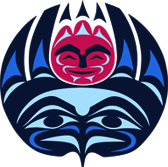
How We Began
The desire to come together in a positive and inspirational way with the children at the center was named by the Indigenous community through a feedback process conducted by Kw’umut Lelum in 2010. Too often the community was being brought together through tragedy, loss and injustice and this pattern of connecting in pain and despair needed to change.
With this feedback, and in honouring the Coast Salish love for soccer, Hope and Health was initiated to bring the community together in a positive way and inspire the children and youth in care in an active, playful way through the beautiful game.
Due to the tremendous level of community engagement and high impact outcomes of the inaugural community camp, our co-founders were determined to build on the success and sustain. More than an annual community event, Hope and Health quickly became a movement, expanding across the Salish Sea to add our now signature annual BC Place Hope and Health Community Camp.
For local and capacity building impact, Hope and Health at Home “H3” was developed in 2017, and refined through multiple nation based deliveries, driving tremendous results maximizing the power of sport to engage, educate and empower Indigenous children and youth - cultivating their inner champions. H3 is a multi-week “play with purpose” holistic sport for social development program delivered locally in partnership with community partners (health and recreation centres, schools, community fields). There are 16 modules focused on life, leadership and social development themes and skill building- all maximizing the power of sport and the beautiful game of soccer to develop Champions For Life.
Updates
With the onset of the COVD-19 Global Pandemic, Hope and Health at Home was transformed into a virtual program “H3O” (Online) and played a significant role in engaging and uplifting Indigenous children, youth and their families around the province and even across Canada. The learning through COVID-19 reinforced just how much is possible working remote and virtually and this has forever altered the organizational strategy going forward to accelerate impact and reach.
Hope and Health also achieved our Charitable Status in Canada on December 11th, 2020.
The MOST exciting accomplishment for 2021 was to realize a dream with bringing the “Be the Change” Penelakut Strong Mini-Pitch to life on Penelakut Island - in partnership with Chief and Council, Kw’umut Lelum, Vancouver Whitecaps, MLS Players Association and Musco. This has been an incredible experience to witness the Mini-Pitch become a community hub of connection and activity- and we look forward to building more in the future. To date we have installed nine Mini-Pitches across communities!
“The most important thing is to try and inspire people so that they can be great.”
What We've Achieved
To date, over 10,000 Indigenous children and youth have attended Hope and Health Annual Community Camps across communities in BC.
Over 75+ member nations represented across the Hope and Health initiatives.
9 “Be the Change” Mini-Pitches have been installed across communities (Penelakut, Snaw-Naw-As, Stz’uminus, Tla’amin, Snuneymuxw, Ts’uubaa-atasx, Sts’ailes, Cowichan Tribes and Malahat).
500 children and youth ANNUALLY receive a stocking filled with essential items, educational toys/books and treats through our “Santa on the Pitch” initiative.
“Be yourself; everyone else is already taken.”
Second Generation Hope and Health Logo
Our second generation Hope and Health logo is an original design by Coast Salish artist Maynard Johnny Jr. created to reflect the positive and uplifting impact for the Aboriginal children and youth involved in Hope and Health.
The eagle represents strength love and harmony, using these qualities to lift our children in a positive and healthy manner.
The picture of the child’s face reflects the joy they experience with being at the centre of our community and feeling loved and inspired.
The open wings and top represent each and every child’s potential to achieve greatness in his/her life and to utilize adversity to learn and develop strength and resiliency.
The intent behind this second generation logo is that it will better fit Hope and Health's strategic direction in utilizing multiple platforms - beyond soccer - to build resiliency and leadership with Indigenous children and youth.
First Generation Hope and Health Logo
Our original Hope and Health logo was designed by Coast Salish artist Maynard Johnny Jr. created to reflect the positive impact of soccer for the Aboriginal children and youth involved in Hope and Health.
The eagles represent strength, courage and personal leadership that comes from being active on the pitch and in being open to the mentorship offered through the Hope and Health experiences.
The picture of the child’s face reflects the joy they experience with being at the centre of our community and feeling loved and inspired.
“In football [soccer], the worst blindness is only seeing the ball.”



